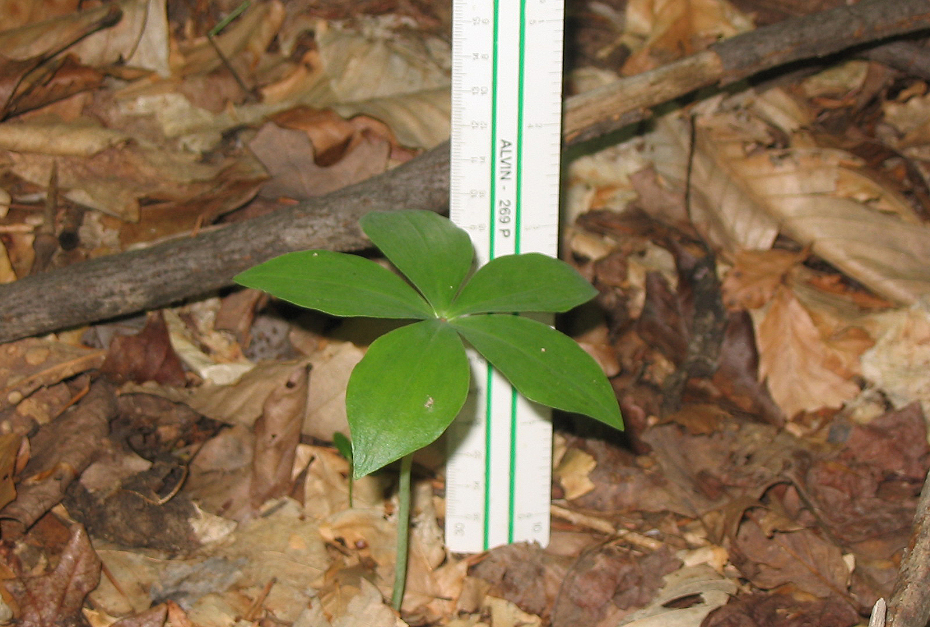Summer is on its way and Wetland Studies and Solutions, Inc. (WSSI) is gearing up for another season of small whorled pogonia (Isotria medeoloides) surveys. If your Virginia or North Carolina project sites host mature hardwood forest with an open understory, you can minimize impacts to your project schedule by having us perform a small whorled pogonia habitat evaluation or survey early in the development process.

small whorled pogonia (Isotria medeoloides)
As a federally-threatened and state-endangered species in Virginia and North Carolina, the small whorled pogonia is protected by both federal and state endangered species laws. The U.S. Army Corps of Engineers, Virginia Department of Environmental Quality, and North Carolina Department of Environmental Quality must each consider potential impacts to the small whorled pogonia before issuing permits to impact wetlands and other jurisdictional waters. The U.S. Fish and Wildlife Service (USFWS) recommends that we conduct a survey for the species if your project is within a county where small whorled pogonia is present and suitable habitat exists. If you miss this survey window, your wetland permit could be delayed up to an entire year.
The field survey window for this species is narrow:
- Northern Virginia: June 1 – July 20
- Southern Virginia: May 25 – July 15
- North Carolina: Mid-May – early July
The small whorled pogonia is a very small orchid that is easiest to identify during this time of year, since the above-ground structures of the species (stems, leaves, and flowers) are most apparent. Small whorled pogonia surveys are valid for two years, and the USFWS may request that the site be re-surveyed if not developed during this two-year period. Note that the small whorled pogonia has been completely extirpated from Maryland, so surveys are not required on Maryland sites.

Where in the World is the Small Whorled Pogonia?
In the Mid-Atlantic, the USFWS reports that the small whorled pogonia is present within 19 counties in Virginia, plus the City of Williamsburg, and 12 counties in North Carolina (see map). Our own scientists recorded the first documented occurrence of the small whorled pogonia in Fairfax County on Fort Belvoir property in 2005.
We can help!
WSSI has USFWS-approved surveyors on staff and we have conducted many small whorled pogonia habitat evaluations and surveys throughout the Mid-Atlantic. We can conduct preliminary (and relatively inexpensive) site evaluations at any time of year to determine whether there is potentially suitable habitat for small whorled pogonia on your project site – and for some sites, this habitat evaluation may be all that is necessary to confirm absence of the species.
Contact us to schedule your small whorled pogonia survey now and keep this species from delaying your wetlands permit! We can help you determine whether your project site encompasses small whorled pogonia habitat, and can conduct a habitat evaluation or survey to confirm the absence or presence of the species.
More About Small Whorled Pogonia
The small whorled pogonia generally occurs in upland mixed hardwood forests. Most occupied sites are on land that was cleared for agriculture and farmed in the past and then allowed to return to a forested state, with canopy trees approximately 40 to 80 years old. Other characteristics common to most inhabited sites include relatively open understory vegetation with sparse herbaceous ground cover, and gentle to moderate sloping topography with northern or eastern exposure.
The plant may grow up to 10 inches tall – though most individuals are much smaller – and has five or six pale green leaves in a whorl at the top of a smooth pale green stem. The small green flower (usually one, occasionally two) sits atop the center of this whorl of leaves; although in any given year, many individuals in a colony do not produce any flowers. Several other species, including the much more abundant and widespread common whorled pogonia (Isotria verticillata) and Indian cucumber root (Medeola virginiana), can appear very similar to the small whorled pogonia. Our scientists are skilled in differentiating between these species, which ensures your project is ONLY affected when the small whorled pogonia is present.
